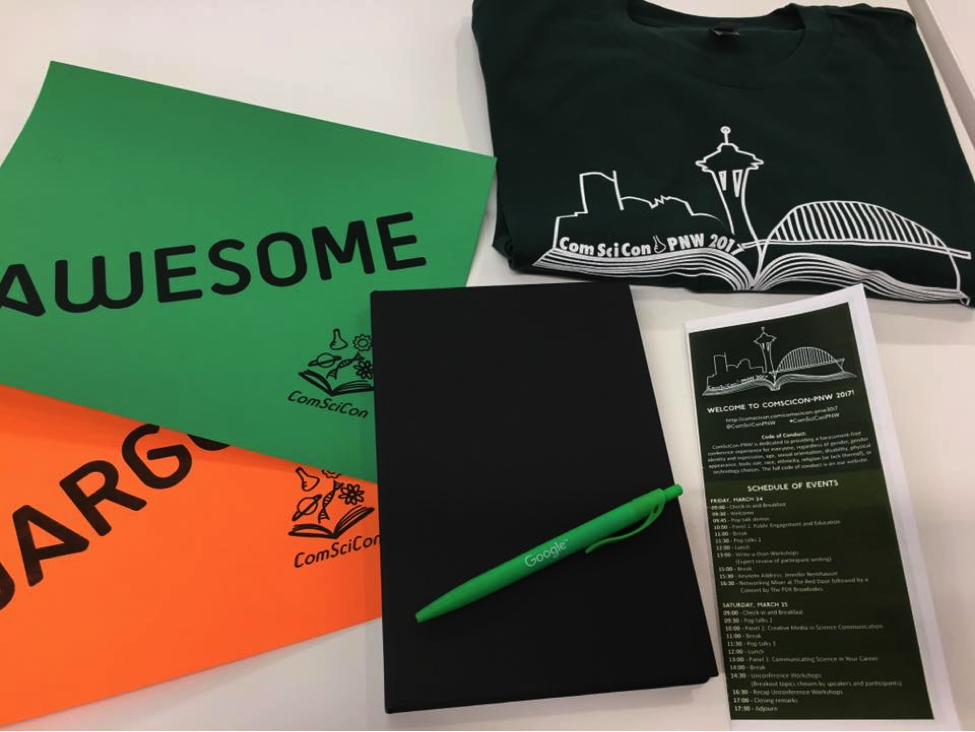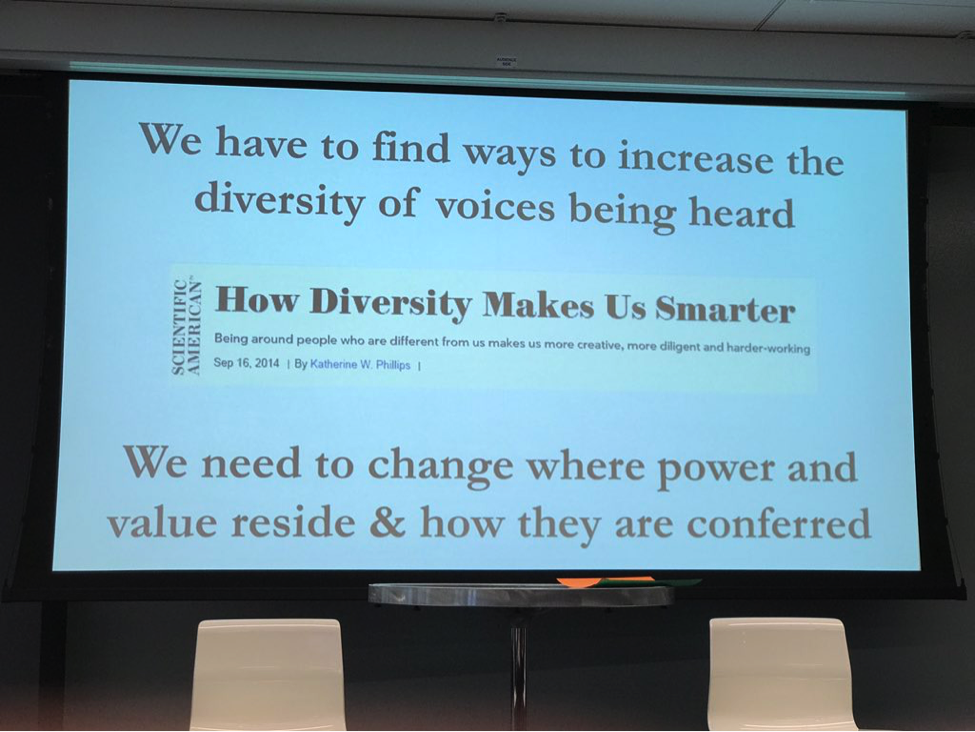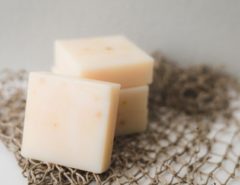BY: AMBERLIE BARNARD
Two months ago, I had the privilege of attending ComSciCon-PNW, a science communication workshop for graduate students in STEM (science, technology, engineering, mathematics). Forty graduate students from the Pacific Northwest region—mostly from Washington and Oregon, but stretching to Idaho and even California—attended the two-day conference held at the Google campus in Seattle, and I proudly represented Oregon State University’s Department of Food Science and Technology. I had the wonderful company of oceanographers, botanists, astrophysicists, volcanologists, fisheries biologists, and more! It was a whirlwind of a weekend, and it left me energized about science communication.

A group photo of ComSciCon-PNW participants, organizers, and experts.
Photo credit: @ComSciConPNW
Before we could talk about talking about science, we had some work to do. All participants submitted a piece for the Write-a-Thon. In this activity, each attendee drafted a science communication piece; it could be about a relevant policy issue, a new development in our field, or perhaps something from outside of our discipline. After drafting our pieces, we were divided into Write-a-Thon groups so we could review each other’s work. Then, we revisited our individual pieces to submit a second draft for expert feedback at the conference—more on that part later.
All attendees received some goodies at registration, including our snazzy matching t-shirts, Google swag, and two signs: “Awesome” and “Jargon.” These signs were valuable tools during our Pop Talks. Attendees had a chance to give a one-minute elevator pitch about their research. During the course of these talks, members of the audience gave instant feedback by holding up signs to let the presenter know how they were doing. Within just a few hours of the conference’s start, we dove straight into Pop Talks.

#ComSciConPNW gear: Pop Talk signs, Google swag, t-shirt, and conference schedule. What more do we need?
Photo credit: @AmberlieBarnard
It was nerve-wracking to give my Pop Talk knowing that instant judgment on it would be delivered, but it was incredibly helpful. Through watching others’ give Pop Talks and presenting my own, I learned better ways of using accessible language to describe my research.
Halfway through the first day of our conference, we met with our Write-a-Thon groups and respective science communication experts. I had the amazing privilege of working with Lindsey Murphy, also known as “Crazy Aunt Lindsey” (@AuntLindsey). She hosts the top-rated children’s show on Youtube—check out The Fab Lab with Crazy Aunt Lindsey (she has a lot of wonderful food science demonstrations too)! Lindsey gave phenomenal advice about all our scicomm pieces, how to brand ourselves, and finding resources. The two-hour session of editing and revising our various scicomm pieces was the highlight of the weekend.
The keynote speaker, Dr. Jennifer Nemhauser of University of Washington, gave a wonderful address about her research in systems biology. She shared compelling words about collaboration, communicating science through art (she received NSF funding to host an art fellow in her lab), and fighting institutional barriers.

Dr. Jennifer Nemhauser emphasized the importance of diversifying science during her keynote address.
Photo credit: @the_n_nicole
We also had three panel discussions featuring expert science communicators over the course of the weekend. We covered topics relating to public engagement, creative media, and career development.
During these discussions, a common question arose: how do we convince members of the public that our research is important? This was an especially relevant question for many scientists in the room, whose research is frequently viewed as inconsequential in a reality of cancer, famine, and climate change. The advice? Identify common values. Dr. Marley Jarvis (@doctor_plankton), a science communicator at the Pacific Science Center in Seattle, recommended that all science communicators do some research on what the top values are in America to help cater our message. For example, an important value in American culture is innovation.

Creative Media in Science Communication panel, featuring Tami Tolpa (@tolpastudios), Monica Cortés Viharo (@MCVPHD), Lindsey Murphy (@AuntLindsey), and James Davenport (@jradavenport).
Photo credit: @dayvayen
While reflecting on all the lessons gained at ComSciCon-PNW, I realized that food scientists have an advantage that many other disciplines don’t: everyone eats food. And at the end of the day, food activists share the same concerns that us food scientists do—we want to ensure that the food we serve our friends and family is safe. We can easily establish common ground with some fine-tuning of our science communication.

The author’s thoughts on science communication.
Photo credit: @AmberlieBarnard
ComSciCon-PNW was an inspirational experience, and I encourage any and all interested food science graduate students to apply! You can find out more information about the national and local workshops at their website.
In the meantime, what are some things we as scientists can do to become effective science communicators? If I learned anything from ComSciCon, it’s that scicomm is a continuous journey. Here are a few tips for brushing up on scicomm:
- Get on Twitter. Twitter gives you access to a large audience through excellent hashtags (#scicomm and #sciart are great access points). Tweeting science is also a great exercise in brevity.
- Make an elevator pitch, and practice it! Next time you’re at the grocery store waiting in line with someone interested in small talk, give it a shot. How do they respond to your language? Perhaps you need to fine tune.
- Read! We scientists frequently get trapped in a loop of academic papers. I commit some time during my week to read things outside academia—news articles, viral stories, and novels. Getting exposure to diverse media expands our vocabulary and allows us to better craft our scicomm.
Happy science communicating!
Amber Barnard is a master’s degree student in Food Science and Technology at Oregon State University. She is working to help Oregon produce growers meet the water quality requirements of the Produce Safety Rule through geospatial modeling. Outside of the lab, Amber enjoys civic engagement, Whedon television shows, and her sassy Siamese cat. You can follow her on Twitter @AmberlieBarnard.






Leave a Reply